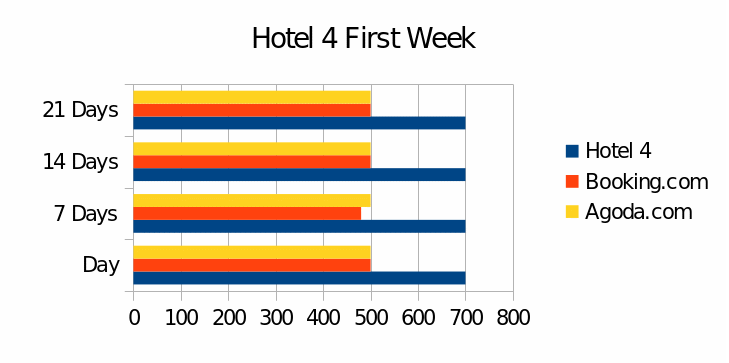Observation has an intimate target to evaluate the parity of room rates under various distribution channels. Furthermore, this research will assess the variations evident on room rates by determining whether advanced reservations are offered at lower prices or not. These were the achievements that the researcher aimed to achieve in this study. He identified that the use of direct observation could be the best strategy to accomplish the task. The initial focuses paid particulate attention to the most popular third-party websites which were regarded as Booking.com and Agoda.com. These websites were used significantly for travelling to Saudi Arabia. Also, the researcher managed to study direct distribution channels that were related to a particular hotel. It is possible for an individual to distinguish hotel websites and central reservation systems among the direct channels.
This research managed to observe the trends in 3 cities of Saudi Arabia called Riyadh, Eastern Area and Mecca. The researcher found it necessary to assess the room rates for particulate rooms in each hotel under study. Consequently, he set on the research from 13th December and commenced on January 24th since there were no distractive events during this period. The behaviors of tourists were not affected by events that could cause abnormal deviations. During the first week of the study, the researcher checked the room rates for 1st four consecutive Thursdays (13th, 20th, 27th of December and 3rd of January). When the 2nd week started on 20th, the researcher identified the rates for 1st four Thursdays (20th, 27th of December and 3rd, 10th of January). On the third week (27th December), room rates for 1st four Thursdays were observed. Similarly, this observation trend was used for the fourth week that started on third of January. Why was Thursday used as the best day for the research? The researcher had identified that a weekend would render people free since it is part of the weekend in Saudi Arabia. Using this strategy, the research was able to assess the room rate parity in various hotels among direct and indirect distribution channels.
After performing this research, he noticed that there was rate parity among fifty five per cent of the total hotels studied. Also, there were 2 OTAs referred to as Booking.com and Agonda.com. Their rates assumed a high proportion of payment compared to the hotel rates. Toh et al, (2011) had pointed out that distribution channels ought to provide similar ratings referred to as rate parity to prevent differences in room rates according to the channels. The observation of this research depicts that differences have been prevented significantly. In cases where these differences exist, we could assume that there were activities that altered the normal running demand of the hotel. This could, in turn, result to variation in occupancy that regulates the overall deviations in rates.
According to Gazzoli et al. (2003), the departments that handle revenue management take the responsibility of facilitating rate parity to depict prevalence of integrity. In some other instances, it was found that hotel rates could exceed the rating of Booking.com and Agoda.com for all the four days. There exists only one exception that showed hotel website exceeding OTAs on 21 days in advance. Contrary, 6 hotel rates were lower than the OTAs and the data to one of these distinguished hotels represented a situation where booking preceded hotel’s websites and Agoda. What if two hotels were used to display the different charges on the period imposed by the hotel channel as well as the 2 third-party websites? The figure 1 below implies the presence of rate parity for 7 and 14 days advancement among the direct and indirect channels. Also, the rates of 3rd party websites, such as booking.com and agonda.com, were beyond the hotel website on that day and twenty one days in advance. On the other hand, the other figure (figure 2) shows the illustration of lack of parity between the entire direct and indirect channels because hotel 4 had prices that were higher than those offered by booking and Agoda in the 4 days. Changes in trend were observed during the last observation of week one. In this case, there were immediate deprivations of rates for some hotels. We cannot ignore a reduction from 10000 to 8900 for the participating hotel number 19.
It is vital to notes the retention of some characters in the observations collected. For instance, there were minimal deviations from one level of advancement to the other. Only few levels had huge deviation such as the one moving from 10000 to 8900. Others did not have significant trends because they depicted unidirectional variations. Therefore, there were no distinguished strategies put in place to identify the reasons behind their variations. Agonda.com and Booking.com have similar charges for their services because there were few incidents where there was a small difference in the rates under the two. In these cases, the rates were as follows;

